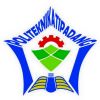Pengendalian Persediaan Bahan Baku Penolong Menggunakan Metode Economic Order Quantity di Industri Makanan Olahan
Abstract
Keywords
Full Text:
PDFReferences
N. K. D. A. Jayanti and L. P. A. Prapitasari, “Penerapan Metode EOQ (Economic Order Quantity) Pada Peramalan Stok Barang,” Konferensi Nasional Sistem & Informatika 2015, pp. 1.
H. Mokhtari, “Economic Order Quantity for joint complementary and substitutable item,” Mathematics and Computer in Simulation, vol. 154, 2018, pp. 34-47
M. W. Iqbal, Y. Kang, and H. W. Jeon, “Zero waste strategy for green supply chain management with minimization of energy consumption,” J. Clean. Prod., 2019.
D. Mayasari and Supriyanto, “Analisis Pengendalian Persediaan Bahan Baku menggunakan Metode EOQ (Economic Order Quantity) pada PT. Suryamas Lestari Prima,” Jurnal Bisnis Administrasi, vol 5, no. 01, 2016, pp. 26-32.
S. Lukman. Manajemen Keuangan Perusahaan (Konsep Aplikasi dalam Perencanaan, Pengawasan, dan Pengambilan Keputusan). Jakarta: Salemba Empat, 2001, pp. 281.
N. Z. Ramadhani, Z. Saidah, R. S. Natawidjaja and A. H. Sadeli,”Analisis Persediaan Bahan Pangan pada Sebuah Rumah Sakit di Kota Depok,” Jurnal Agrikultura 2022, 33 (1), pp.78 – 82.
H. N. Arman. Perencanaan dan Pengendalian Produksi. Yogyakarta: Graha Ilmu, 2008, pp. 113 – 114.
N. Apriyani and A. Muhsin, “Analisis Pengendalian Persediaan Bahan Baku dengan Metode Economic Order Quantity dan Kanban pada PT. Adyawinsa Stamping Industries, Jurnal OPSI, 10 (2), pp. 128 – 142.
M. S. K. Turnip, “Analisis Perbandingan Pengendalian Persediaan Bahan Baku Methanol antara pendekatan Model Economic Order Quantity dengan Just In Time pada CV Mamabros Servicindo Batam,” Journal of Applied Managerial Accounting, vol. 1, no. 2, 2017, pp 1-15.
I. Amri, S. Hahury and I. J. Leimena, “Analisis Perencanaan dan Pengendalian Persediaan Material pada PT. PLN (Persero) UP3 Sorong dengan Menggunakan Metode Economic Order Quantity (EOQ),” Metode Jurnal Teknik Industri, vol 6 (1), 2020, pp. 6-12.
R. R. Enru, H. Moektiwibowo and E. Meladiyani, “Analisis Pengendalian Persediaan Ayam Broiler Hidup dengan Pendekatan Metode Economic Order Quantity (EOQ),” Jurnal Teknik Industri Universitas Dirgantara Marsekal Suryadarma, vol. 9, no.1, 2020, pp. 21-38.
Heizer, Jay, Render, Barry and Munson, C. Operation Management. Twelfth Edition. Pearson, 2016, pp. 496 – 502.
Refbacks
- There are currently no refbacks.











_-_Copy10.png)

